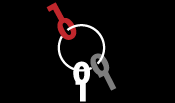Is it finally time for P2P infrastructure?
Alison Powell examines just how tricky it is for social media to reach mass distribution whilst still remaining decentralised

Image: CC-AT Flickr: tomsaint (Rennett Stowe)
Is the dream of alternative peer-to-peer infrastructure getting closer to reality? Last week Eben Moglen, the lawyer for the Free Software Foundation launched a new project called Freedom Box, which is based on the idea that small low-power plug servers, running free software, could provide a latent, autonomous communication network that could also be used to securely store files and personal information.
In the context of internet outages in Egypt and the increasing amount of personal information stored on social networking sites like Facebook, this suggestion seems both radical and timely; for those who have been following the peer-to-peer infrastructure movement over the past several years, this is nothing new.
The hardware and software for creating meshed networks of individual computers is decades old. The organising principle that it is associated with, is older still. Regardless, we tend to associate the rise of peer-to-peer communication (and a related notion of “mass self-communication” developed by Castells) with the expansion of digital media that lowers the cost (of time, or energy) required to transmit our message to the world.
Now, as our mass self-communication is taking place on platforms owned and controlled by a small number of companies (Facebook, Google and Twitter), we are facing a new set of problems. It is not just that the internet has a ‘kill switch’ – it’s also that the platforms that make distributed social media powerful are collecting lots of private information and storing it centrally. This makes it easy for sites to profit from the data, but it creates a serious limit on the power of coordination and horizontal organisation that peer-to-peer communication offers.
Social media is changing the balance of power because more people have the opportunity to communicate with each other. This opportunity is constrained not only by the ability of a government or ISP to shut off the means of that communication, but also by the ability of a SNS (social network service) provider to reveal, sell, trade, or profit from personal information. This reminds us to consider the emphasis on the “mass” in the “mass-self communication”.
Here’s where the Freedom Box comes in, conceptually. The idea is that in a small inexpensive box that’s linked into an alternative ‘non-internet’, you have everything that you hold dear. It’s on your server, and/or it's on the network that everyone’s freedom box makes. Sounds great, in theory.
But as important as autonomous infrastructure can be for providing a decentralised alternative to the centralised social networks and communication systems that we rely upon, we also have to consider why and how social media has changed the balance of power in these eventful past few weeks.
As I noted above, the distributed peer-to-peer method of communication has been around for as long as computer-mediated communication. What has made it important at the moment is the scale at which this form of communication can now operate. This massive scale has been the result of the very centralised service that Moglen and others rightly identify as problematic. But it’s also what makes the transformations so important. Geeks and hackers have been trying to make peer-to-peer networks for a very long time. They haven’t succeeded, but Facebook has.
Now, we need to confront the challenge of that success. A new box with free software won’t automatically do this, no matter how fantastic the software or clever the networking protocols. Dozens of projects have proven that something like the Freedom Box can work, technically. What is required to transform our communication and extend the transformative potential that we are now experiencing, is a distributed network of communication that locates private information with the end-user. We’re not there yet – but we have lots of examples of networks that have tried and failed to do this. Maybe we should start looking more closely at them.
Alison Powell is the LSE Fellow in Media and Communications at LSE. Her research examines digital media policy from a ‘bottom up’ approach; internet governance; and the role of open-source modes of production on the democratisation of communication
This article originally appeared here
Share this article











Comments

Latest Articles
Featured Article
Schmidt Happens

Wendy M. Grossman responds to "loopy" statements made by Google Executive Chairman Eric Schmidt in regards to censorship and encryption.
ORGZine: the Digital Rights magazine written for and by Open Rights Group supporters and engaged experts expressing their personal views
People who have written us are: campaigners, inventors, legal professionals , artists, writers, curators and publishers, technology experts, volunteers, think tanks, MPs, journalists and ORG supporters.






Comments (0)